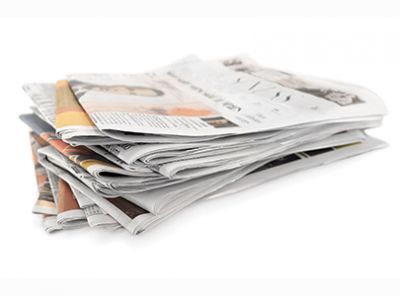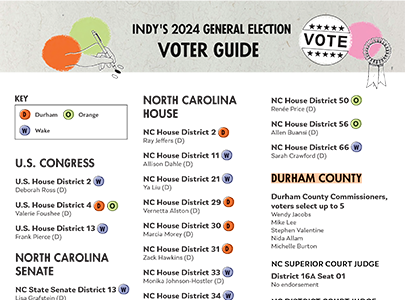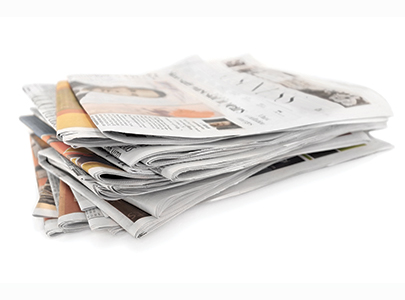One checklist for election countdown
Jim Pumarlo
Sep 1, 2024


Election Day is fast approaching. Newsrooms are likely starting the countdown when they take a collective breath from the exhaustive campaign season and return to some level of normalcy.
Elections coverage is put under the microscope by readers, especially if newspapers have a strong editorial voice. The scrutiny is ratcheted to new heights in today’s hyper partisan political climate. Editors and reporters confront passions through phone calls, emails, letters and a variety of social media avenues. Candidates, as well as their supporters and detractors, are quick to challenge all aspects of election content.
Pressure only builds in these final weeks as campaigns seek to elevate their candidates and issues. Newspapers should seize the opportunity to reaffirm the principles that have guided their coverage for all these months and resolve to not get hoodwinked on election eve.
HERE’S ONE DO AND DON’T CHECKLIST TO GUIDE COVERAGE
- Press releases: Do consider press releases of substance, and strive to give all parties opportunity to comment, if warranted. Do not give a second thought to ignoring the churn of statements that are repetitive and/or level a series of unsubstantiated charges against opponents.
- Letters to the editor: Do your best to provide a forum for readers to endorse their favorite or un-endorse their least favorite candidates or referendum issues; letters are the lifeblood of an editorial page. Do not be afraid to edit letters aggressively, especially those that have all the signs of an orchestrated effort.
- Candidate forums: Do report on those forums that offer the potential for exploring new territory or feature races where candidates are running neck and neck or are generating especially high interest. Do not feel compelled to devote staff time and resources on events that offer little more than a regurgitation of issues and statements that have been reported to death.
- Whistle-stop tours: Do report on touring politicians who are seeking statewide office if you have the ability to quiz them on issues that connect with your readers. Do not feel driven to publish a photo and cutline of politicians who make a 10-minute stop as part of a statewide whistle-stop tour.
- Candidate endorsements: Do report endorsements and noteworthy statements for or against candidates, especially those contrary to the political norm; include reaction from the respective campaigns. Do not waste precious time covering a press conference from political party chairs offering their obligatory support for a local slate of candidates.
- Eleventh-hour charges: Do take the time to investigate the legitimacy of 11th-hour charges against a candidate to see if they warrant attention. Do not feel compelled to report if a campaign had the information in hand for weeks and waited for the last minute to try to blindside a candidate.
- Deadlines: Do stick to deadlines, especially the ones specifically set for election season — i.e., the date for letters to the editor that raise new issues. Do not accept such feeble excuses as someone was caught in traffic or the clock on the home computer was five minutes slower than the editor’s computer.
- Election reports: Do take the opportunity to take a collective sigh of relief — even celebrate — after your election edition is put to bed and you’ve reported the votes and quotes. Do not let this signal the end of election coverage. Use your shared knowledge to translate the results, providing valuable analysis and insight for readers.
Election coverage truly tests the thick skin of newsrooms. That’s all the more reason to place a premium on fair and consistent coverage. Don’t be surprised if the brickbats still outweigh the bouquets tossed the way of editors and reporters. If all sides are crying foul, it’s a good bet you’ve put your best foot forward.
It’s understandable for newspapers to feel battered and bruised by the time ballots are cast. In truth, we should be grateful for the attention placed on each and every word, photo, ad or other element of election coverage. Despite today’s fractured media landscape, newspapers have the edge in their ability to devote resources and space for comprehensive and meaningful election coverage. Candidates recognize that and care deeply how they are portrayed to the electorate.
The vibrant newspapers are seizing the challenge of remaining the fortress of local information that is the backbone of our democracy.
Jim Pumarlo is former editor of the Red Wing (Minnesota) Republican Eagle. He writes, speaks and provides training on community newsroom success strategies. He is author of “Journalism Primer: A Guide to Community News Coverage,” “Votes and Quotes: A Guide to Outstanding Election Coverage” and “Bad News and Good Judgment: A Guide to Reporting on Sensitive Issues in Small-Town Newspapers.” He can be reached at www.pumarlo.com and welcomes comments and questions at jim@pumarlo.com.









